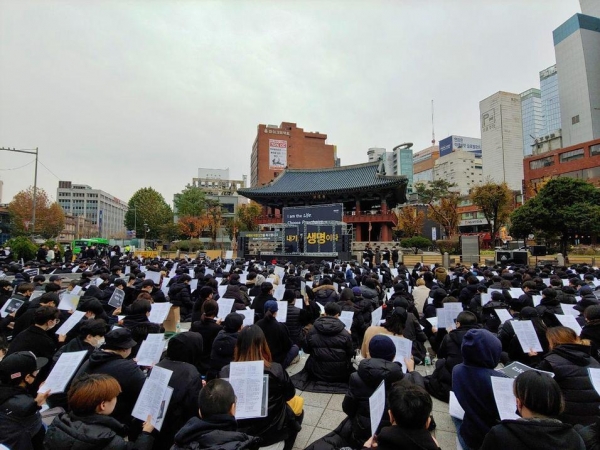
On April. 11, the Constitutional Court announced the anti-abortion law ‘unconstitutional’. Since 1953, abortion has been illegal under Article 269 and 270 of the Criminal Code; the country restricted women’s fundamental rights by punishing those who had an abortion with a fine up to two million KRW and imprisonment for up to a year. Doctors who conducted such surgeries were also sentenced to imprisonment for up to two years. Although illegal, the government-financed survey conducted last year showed there had been 50,000 abortion surgeries in 2017 alone, meaning that one out of five women with the experience of pregnancy had to face illegal, dangerous surgeries. Now, with seven out of nine judges declaring the ban on abortion unlawful, women have been freed from the country’s restriction, and, more importantly, the social expectations they were subjected to – being a ‘mother’. The Parliament must review the anti-abortion law by Dec. 31 of 2020, otherwise, the law will automatically lose its power from 2021 onwards.
The constitutional appeal for the anti-abortion law was challenged in Feb. 2017 by an obstetrician charged for conducting abortion operations. However, this is not the first time the anti-abortion law was called for a constitutional appeal. In 2012, a midwife, indicted on charges of aborting a 6-week-old foetus, called for a constitutional appeal. Back then, the court decided that the law was constitutional, recognising the foetus’s right to live. Women’s fundamental rights and reasons for wanting an abortion were not considered at all; rather, the court merely stressed that the law was an effective way to reduce abortions, and that “if the reasons for allowing abortions were extended to include social and economic reasons, there is a possibility that abortion would become commonplace, leading to a disrespect for life.”
This time, the Constitutional Court prioritised women’s rights. It claimed that “the Constitution should guarantee human dignity and general moral rights, including the individual’s right to choose.” Furthermore, the court emphasized the immense impact that pregnancy, childbirth, and childcare have on women’s lives, concluding that the woman should have the right to choose whether to maintain or terminate the pregnancy. The court – and the society – had changed its priority from the foetus’s rights to women’s rights.
It took only seven years for the court’s and the society’s view on abortion to change; it took only seven years for society to view pregnancy and childbirth as a matter of ‘choice’ for a woman. Despite the short span of time, such a reversal in perspective was possible due to successive incidents and corresponding social movements, which increased the public recognition of women’s rights. Three months after the announcement of abortion as illegal in 2012, the public was shocked once it was revealed that a teenager had died from excessive bleeding during an illegal abortion, and that the hospital had demanded the teen pay 6.5 million KRW for the operation. This incident proved that the anti-abortion law does not restrict people from abortion, but rather forces women to face overpriced, unassessed, and life-threatening surgeries. Since the procedure for the surgery is not part of medicine education, abortion operations are conducted by inexperienced surgeons, and, since the procedure itself is illegal, women cannot be protected from neither side effects nor medical malpractices.
In Sep. 2016, the Ministry of Health and Welfare announced to include the abortion surgery in ‘immoral medical practices’ to allow for the imprisonment of doctors conducting abortions for up to 12 months. This angered many women’s rights activists since such enforcement reflected the ministry’s opinion that pregnancy and childbirth is the women’s responsibility only; instead of distributing the responsibility of the foetus to the government and to the partner, the ministry was simply cornering women to seek more dangerous surgeries. This triggered more than 500 people dressed in black to gather and rally for the abolishment of abortion. In Sept. 2017, a petition asking for the abolishment of the anti-abortion law was uploaded to the Blue House website, and, within just a month, more than 230,000 people signed the petition. This provoked the government to review the law and conduct a survey reflecting women’s opinions on abortion; the government had implicitly accepted that, concerning abortion, women’s opinions were of the highest importance.
Although the historic court decision has become another landmark of the propulsion of women’s rights, there is still a long way to go. Parliament must evaluate and adjust the laws, but, more importantly, society’s view on pregnancy and childbirth must change. Pregnancy and childbirth are not just women’s responsibility; it is of the woman, the man, and the country. One must realize that contraception, pregnancy, and childbirth is the responsibility of both genders. This country must realise that it is not only the mother who raises a child, but the legislation, welfare, and social environment. A child is not made nor raised by a woman herself.


